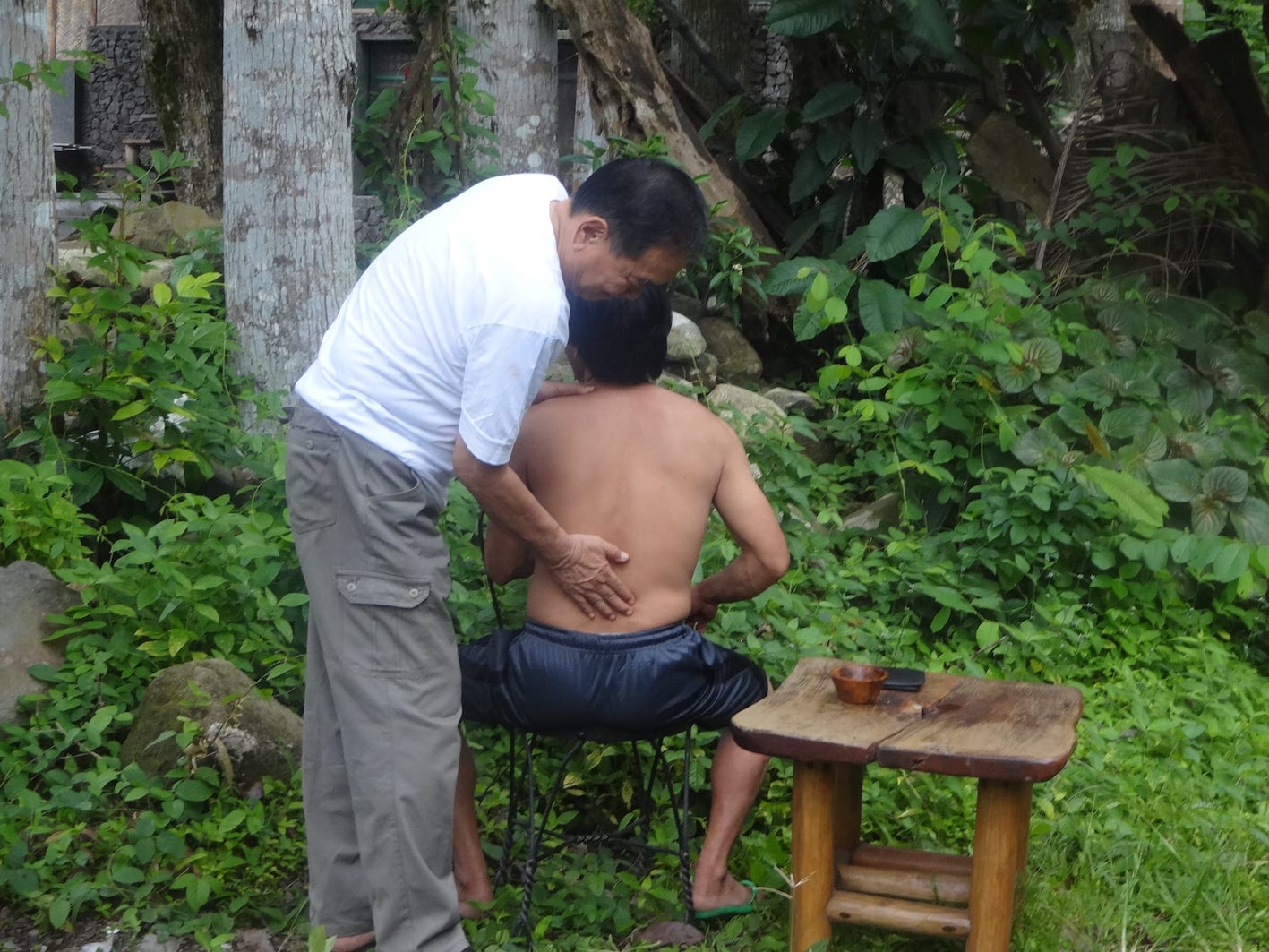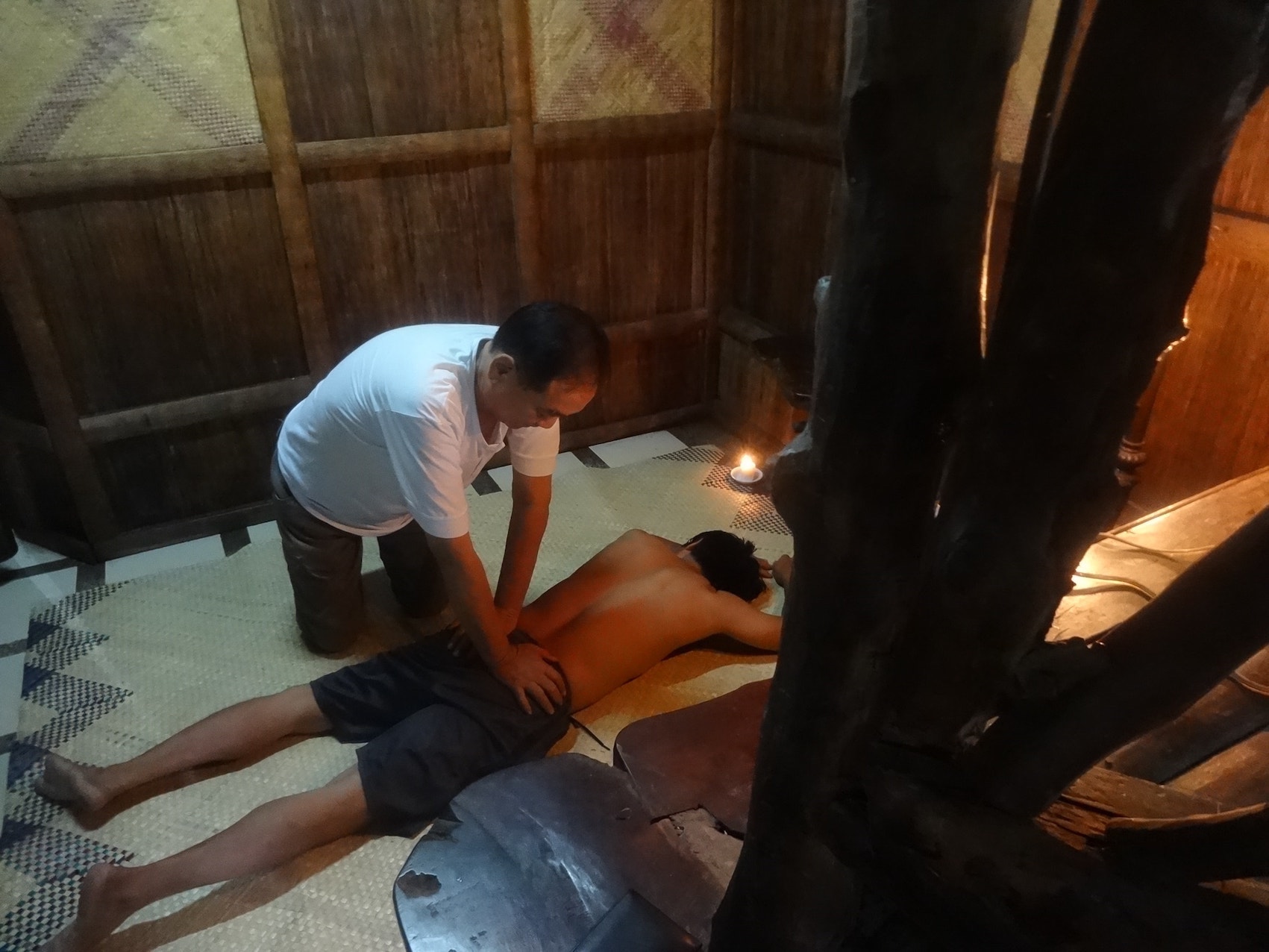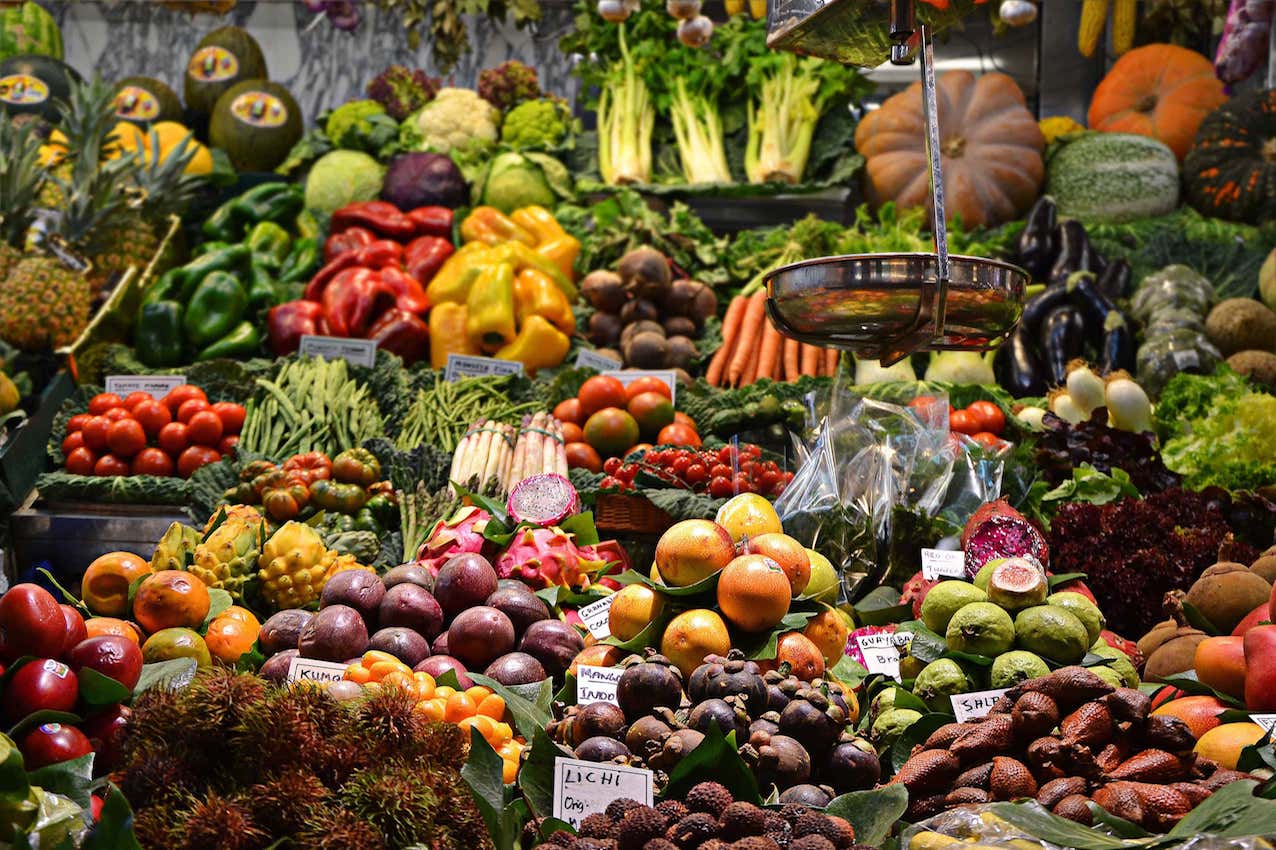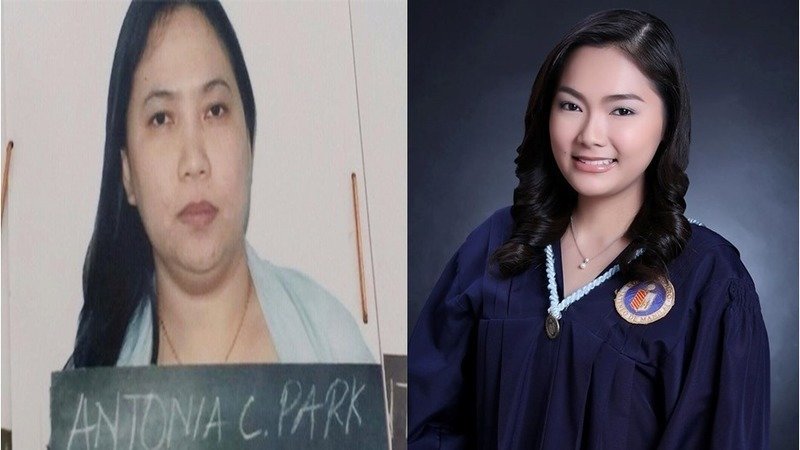In 2008, retired finance professional Pablito Bermundo found himself staring up at the surgical lighting hanging over the operating table, feeling both annoyed and amused that he was once again going under the knife.
After his gallbladder was removed in 2006, a massive cyst grew in his liver, one that would need to be surgically drained every six months. After two years of being wheeled in and out of the operating room, he decided that he’d had enough.
“I have to look for other options,” he thought.
In 2009, Bermundo met a man who convinced him to give hilot a shot. Hilot is an ancient Filipino healing method in which ailments are purportedly treated with massages administered by healers known as manghihilot, who supposedly derive their power from God. Though many doctors are skeptical that hilot can cure serious illnesses, Bermundo credits it with saving his life.
With standards of living and education levels on the rise across much of Southeast Asia, including the Philippines, it would stand to reason that traditional healing methods — often scientifically dubious, and occasionally accused of making matters worse — would have begun to wane outside of remote areas where traditional ways still hold sway. However, Bermundo is one of many middle- and upper-class Filipinos who, despite their means and access to modern treatments, have continued to put their faith in alternative healing methods over Western medicine.
Meanwhile, as access to science-based Western medicine increases, so too does exposure to Western quackery, and questionable new-age healing practices — many of which have quasi-Orientalist roots, and have been debunked by science — are also beginning to make inroads among well-off Filipinos.
A gift from the gods

Though finding figures on alternative medicine use is next to impossible, medical anthropologist and physician Dr. Gideon Lasco says that the embrace of alternative treatments transcends class.
“People just go to different places. For example, our fellow Filipinos in far-flung areas might go to an albularyo [a traditional healer], whereas a millionaire might fly into some Indian [retreat], or see some Korean practitioner.”
He said people have different reasons for being wary of modern treatments.
“Some people might have previous experience in hospitals or [with] doctors that they didn’t enjoy.”
In Bermundo’s case, what pushed him to go for hilot was his unhappiness with the options Western medicine and health professionals were presenting him.
“I sought a second, third opinion. One doctor said he could cut off the cysts [because he said the liver] would still regenerate,” he said, adding that to him, the treatment sounded too invasive.
But that all changed when he met the late Boy Fajardo, a manghihilot who learned the treatment through apprenticeships with rural healers he met in his travels around the Philippines.
Bermundo felt he had nothing to lose by trusting the healer, and Fajardo put him through regular weekly hilot sessions, and made him drink an herbal concoction containing water spinach and banaba leaves after every meal. After one month under Fajardo’s care, Bermundo went for an ultrasound and was pleasantly surprised to see that his cyst had shrunk dramatically.
Bermundo recalls his doctor telling him, “There are no scientific studies that prove that hilot works, but just continue what you’re doing.”
Fajardo passed away in 2018, but Bermundo, now 76, still goes for hilot sessions, and remembers the healer as a charming man who was easy to trust.
“He was naturally friendly; he wasn’t in a hurry. He would answer all of your questions; you can call him anytime.”
Fajardo’s protégé Louanne Calipayan told Coconuts Manila that kindness was an especially important requirement for a manghihilot, and not just because it improves their bedside manner.
“They have to be good people because what they offer is a service. A healer needs to have this characteristic because [we believe] he channels the energy from a Supreme Being,” she said. “A healer has to change what’s in his heart because that’s the energy that he will channel out of himself.”

Calipayan said that despite the advancements modern medicine has made, she and her associates are seeing a resurgence in interest in hilot.
“We have people flying in from Visayas and Mindanao and all other parts of Luzon. These are not the stereotypical people who go for hilot, who are uneducated or don’t have money to pay a doctor,” she said. “In many cases, these are people who have been to many doctors or have had different treatment options, but they found the relief they were looking for in hilot.”
It’s not just Filipino patients who are becoming increasingly interested in hilot. As with other Eastern medicinal practices of unproven efficacy — like India’s Ayurvedic healing, for instance — hilot is attracting attention among Westerners. Calipayan said that not only has their group trained students from all over the country on how to practice hilot, she has also had some from as far away as Canada.
Medical anthropologist Lasco said he was skeptical of the actual medical benefits of hilot, but allowed there was still a lot of things doctors could stand to learn from traditional healers like Fajardo and Calipayan.
“Patients don’t just go to a doctor to get a diagnosis or treatment. They also go to the doctor to get comfort, to get reassurance, to understand what’s happening to their bodies, to be given a chance to discuss choices,” he said.
“These traditional medicine practitioners offer us a clue of what patients are looking for. These hilot, albularyo — what they offer is a personal connection.”
‘He died of sadness’
But for every apparent alternative healing success story like Bermundo’s, there’s another like J.B. Bolaños’.
A publicist by trade, Bolaños had grown skeptical of Western medicine after he witnessed what it did to his late mother, Lina.
In a recent phone interview, J.B. told Coconuts Manila how he lost both of his parents, starting with Lina, who died of lung cancer in March of 2018 after a grueling course of chemotherapy that ravaged her body. When his father, Melecio, was diagnosed with pancreatic cancer, he looked for another option.
“I saw what chemo did to my mom. Every three weeks we would fly to China for cryosurgery, and chemo. She would feel so weak after two days,” he recalled. “[That’s why I thought] I would not go for conventional therapy for my father.”
J.B. explained that based on his research, pancreatic cancer has a very poor prognosis, which further pushed him to try alternative means for his father. Chemo, he believed, would have just made Melecio weaker.
Melecio went through an alternative treatment called Gerson therapy, a dietary regimen devised by the German-American physician Max Gerson, who began touting it as an effective alternative cancer treatment in the 1920s. In Gerson therapy, patients adhere to a strict diet, purportedly to flush out toxins, and are also given coffee enemas, supposedly to spur the production of glutathione, a detoxifying antioxidant.

However, by 1989, the American Cancer Society had already evaluated the treatment and labeled Gerson therapy a sham, finding no evidence that it could effectively treat cancer. Prior to that, the National Cancer Institute in the United States studied 60 patients who used the Gerson therapy between 1947 and 1959, and concluded that the regimen did not benefit those patients.
More recently, an Australian “wellness” blogger documented her own rejection of more aggressive cancer treatment in favor of Gerson therapy. Despite consuming 10 juices and undergoing five coffee enemas a day as part of the regimen, she died at age 30 in 2015.
Despite the questionable nature of the treatment, J.B. and his father decided to try the method, which proved equally as expensive and taxing as chemotherapy.
“It’s all about juicing, the right diet, where everything has to be organic,” J.B. explained. “He had to take around nine juices a day, but they’re organic. All are fresh. You cannot prepare the juice like two hours before [you drink them]; you have to prepare them on the spot.”
Because J.B. was busy managing his own company while juggling a teaching career, he had to hire two nurses who worked in shifts to take care of his father. Aside from the organic juices, his father was also infused with high doses of Vitamin C, Vitamin B17, and Chinese herbal medicines, and underwent ozone therapy, an alternative treatment that supposedly increases the amount of oxygen in the body.
Melecio ultimately passed away, but his son still believes that the treatment he received gave him the best quality of life.
“Conventional [chemo] therapy would have given him no assurance that he would win” the battle against cancer, J.B. said. “There were no assurances; in fact, he might have died sooner.”
“My dad died of heart failure. Normally, if you die of cancer, it’s multiple organ failure. What he died from was totally unrelated. His heart just stopped. And I know that when someone has pancreatic cancer when you hold that person’s hand, they would feel pain. My dad never had that experience,” he added.
“He died of sadness [from my mother’s passing]. I would like to believe that he did not die of cancer.”
Lasco, the medical anthropologist, said a belief in alternative treatments is common among those who have been diagnosed with cancer because of the high rate of mortality. Ditching chemotherapy — as JB did for his father — is understandable given the extreme side effects.
“It’s natural for us to want to live as long as we can, but for other people, their priority is their quality of life. They would rather have a normal and ‘non-chemotherapy’ kind of life and think, ‘OK, I’ll risk this treatment. If it doesn’t work out, that’s OK with me,’” he said.
Still, as a physician, Lasco would not recommend alternative treatments to his own family.
“People have their own reasons [for using such treatments]…I don’t want to debate [against them] because it’s easy to find someone who died due to chemotherapy,” he said.
“Whether we like it or not, we are mortals and one way or another, we will all die. So the best thing we can do [as doctors] is to show patients that this kind of treatment, based on a global study, has a recovery rate of this percentage.”
Profiting on pain
Lasco, however, remains worried about fraudulent healers who take advantage of patients desperate to find a cure for their terminal illnesses, specifically cancer.
The country is no stranger to such charlatans. In the 1970s, for example, the Philippines became known for its psychic healers and those who claimed to be able to perform “surgery” with their bare hands. The most famous of them, Ramon “Jun” Labo, even “treated” the late comedian Andy Kaufman and then-President Ferdinand Marcos. Labo was later sued for swindling in Moscow by thousands of his former clients.
Another high-profile alternative healer was Antonia Park, who admitted to Rappler in 2014 that she was not a registered physician in the Philippines, despite working as a “stem cell doctor” for former President Gloria Macapagal Arroyo and the late Quezon City Vice Mayor Charito Planas.
Park was sued by businessman Bernard Tan in 2013 after Park “treated” his late daughter, Kate Tan, whose cancer recurred in 2012.
According to Bernard, Park said his daughter was just suffering from a hormonal imbalance and promised to treat her within three months through stem cell therapy, Rappler reported. Park also put Kate on a restrictive diet featuring fruit and vegetable juices. But as the months passed, Bernard noticed that his daughter was not getting any better.
Kate ultimately went back to chemotherapy and died in July 2013, with Bernard blaming Park for her death. Park was charged with fraud and reckless imprudence resulting in homicide, and her clinic was shut down by the authorities.

Lasco said that despite people’s understandable motivations for seeing alternative treatments, there is a need to protect patients and their families from healers of questionable backgrounds, without dismissing the legitimate fears and concerns of patients.
“We should be vigilant about how people’s desperation [is] being used by these alternative providers. Our regulatory agencies should go after these treatments,” Lasco said.
“People don’t want to give up that easily, and they will avail of treatments, especially these treatments offered by people who offer them hope. I’ve seen it happen that they’re taken advantage of,” he noted. “There’s no way to prove if these treatments work or not because people don’t complain — because they’re dead.”
Read more Coconuts Manila feature stories here.



Reader Interactions